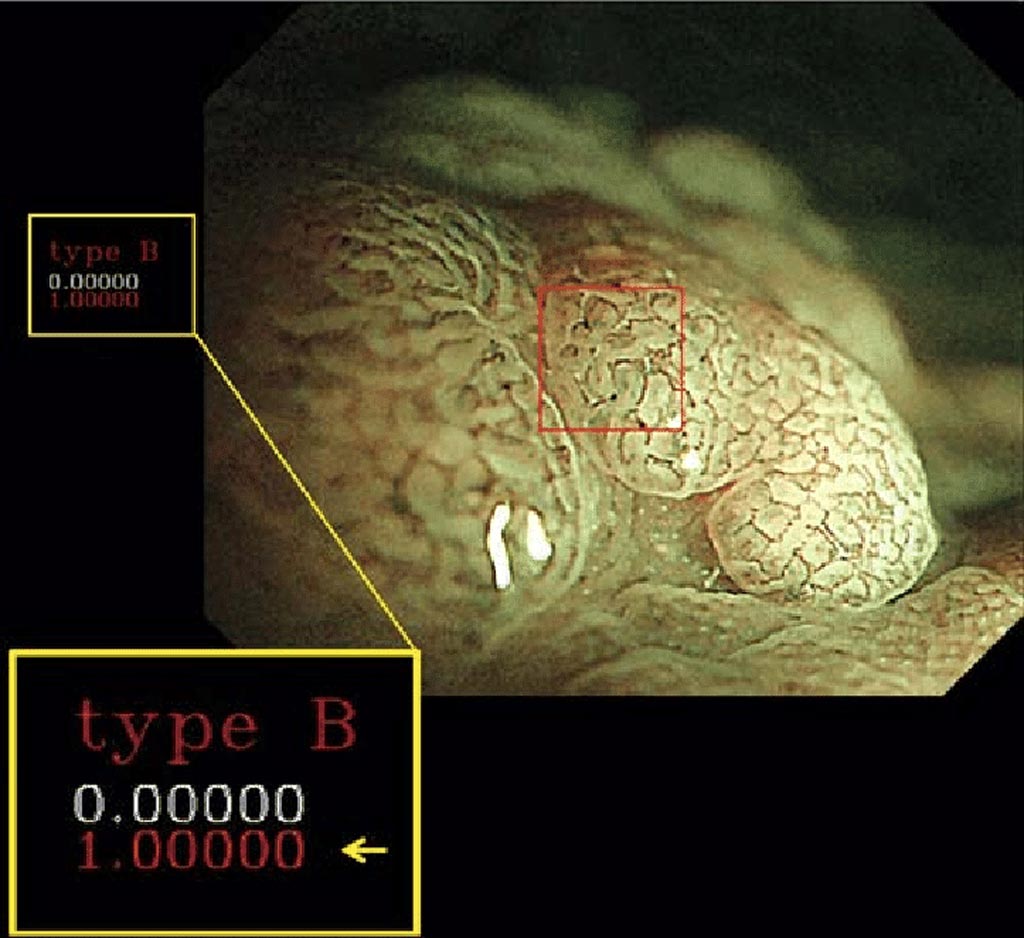AI Reliably Identifies Diminutive Polyps During Colonoscopy
By MedImaging International staff writers
Posted on 10 Sep 2018
Real-time computer-aided diagnosis (CAD) may help endoscopists distinguish between small neoplastic and benign polyps during colonoscopy, claims a new study.Posted on 10 Sep 2018
Researchers at Nagoya University (Japan), Showa University Northern Yokohama Hospital (SUHY; Japan), and other institutions conducted an open-label, prospective study in 791 consecutive patients undergoing colonoscopy at SUHY in order to evaluate the performance of real-time artificial intelligence (AI)-driven CAD in analyzing microvascular and cellular images obtained using a X520 ultra-magnifying endocytoscope, following application of narrow-band imaging (NBI) and methylene blue staining modes.

Image: A new study claims computer-aided diagnosis can help identify cancerous polyps (Photo courtesy of Yuichi Mori/ SUHY).
The CAD-predicted pathology of detected diminutive polyps--less than five mm in diameter--was then compared to pathologic diagnosis of the resected specimen (gold standard). The primary end point was whether CAD with the stained mode produced a negative predictive value (NPV) of 90% or greater for identifying diminutive rectosigmoid adenomas, the standard threshold required to “diagnose-and-leave” nonneoplastic polyps. Best- and worst-case scenarios assumed that polyps lacking either CAD diagnosis or pathology were true- or false-positive or true- or false-negative, respectively.
The results revealed that of the 466 diminutive polyps (250 of them rectosigmoid adenomas) resected from 325 patients assessed by CAD, pathologic prediction rate was 98.1%. The diminutive rectosigmoid adenoma negative predictive value of CAD--with stained mode--was 96.4% in the best-case scenario, and 93.7% in the worst-case scenario. With NBI, the best-case scenario was 96.5% and the worst-case scenario was 95.2%. The study was published on August 14, 2018, in Annals of Internal Medicine.
“The most remarkable breakthrough with this system is that AI enables real-time optical biopsy of colorectal polyps during colonoscopy, regardless of the endoscopists’ skill. This allows the complete resection of adenomatous polyps, and prevents unnecessary polypectomy of non-neoplastic polyps,” said lead author Yuichi Mori, MD, PhD, of the SUHY Digestive Disease Center. “We believe these results are acceptable for clinical application and our immediate goal is to obtain regulatory approval for the diagnostic system.”
Benign colorectal adenomas develop from epithelial tissue, while most colorectal cancer develops from adenomatous polyps, and are in turn termed adenocarcinomas. Colonoscopy screening helps identify and remove adenomas before they become a problem, since the bigger the adenoma, the greater its chances of being cancerous. For example, an adenoma, which is 15 mm in diameter, has a 30-50% chance to turn cancerous.
Related Links:
Nagoya University
Showa University Northern Yokohama Hospital














